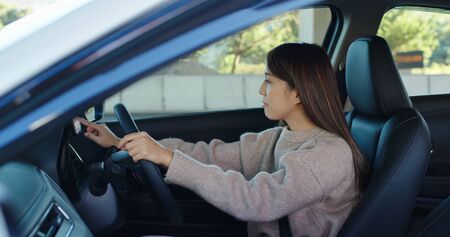1. Stay Calm and Ensure Safety
In the immediate aftermath of an accident, it is crucial to remain calm and prioritise safety above all else. As a young driver in the UK, following proper road safety etiquette not only helps prevent further harm but also supports any future insurance claims. Here’s how you can secure the scene and check for injuries effectively:
Steps to Secure the Scene
- Stop Your Vehicle: It is a legal requirement in the UK to stop at the scene of any accident, no matter how minor.
- Switch on Hazard Lights: Activate your hazard warning lights to alert other road users and reduce the risk of further collisions.
- Move to a Safe Location: If possible and safe to do so, move vehicles out of traffic flow. On motorways or dual carriageways, use the hard shoulder or safest verge available.
Check for Injuries
- Assess Yourself and Passengers: Quickly check if you or your passengers are injured. Do not attempt to move anyone who may have suffered neck or back injuries unless there is an immediate danger (such as fire).
- Check Others Involved: Politely approach other parties involved, including pedestrians, cyclists, or other drivers, and ask if they require assistance.
Make Sure Everyone Is Safe
- Call Emergency Services: In case of injury or if the road is blocked, dial 999 or 112 immediately. Provide accurate location details using road signs or landmarks.
- Warn Other Drivers: If it’s safe, place a warning triangle at least 45 metres behind your vehicle on normal roads (but never on motorways), as per UK regulations.
UK Road Safety Etiquette
Remain polite and composed when interacting with others at the scene. Avoid assigning blame or arguing; focus on ensuring everyone’s well-being first. Remember, showing patience and responsibility reflects well on your driving record and supports your insurance process later.
2. Exchange Details and Gather Evidence
Immediately after ensuring everyone is safe and the vehicles are secure, you must legally exchange information with all other parties involved in the accident. Failing to do so can result in legal penalties under UK law.
How to Exchange Information
According to UK regulations, you are required to provide your name and address to anyone with reasonable grounds for requiring them, such as other drivers, passengers, or property owners affected by the incident. If you are not the registered keeper of the vehicle, supply their details too. It’s also essential to give your insurance company’s name and policy number if requested.
Details You Must Record
| Detail | Description |
|---|---|
| Name and Address | Of all drivers involved (and vehicle owners if different) |
| Contact Number | For follow-up communication |
| Vehicle Registration Number | Plates of all vehicles involved |
| Insurance Details | Insurer’s name and policy number for each driver |
| Date and Time of Accident | Exact time and date of the collision |
| Location | Precise location (street name, nearest junction, postcode if possible) |
| Description of Damage/Injuries | A brief account of any damage or injuries observed |
| Witness Details | Name and contact information for any witnesses present |
Gathering Evidence at the Scene
- Photographs: Take clear photos of all vehicles from multiple angles, close-ups of damage, road conditions, traffic signs, skid marks, and any relevant landmarks.
- Sketches: Draw a quick diagram showing the position of each vehicle before and after the collision.
- Notes: Record weather conditions, lighting, and anything unusual about the scene (e.g., potholes or obscured signs).
- Witness Statements: Politely ask witnesses for a brief statement describing what they saw. Note their names and contact numbers.
- Police Reference Number: If police attend the scene, request their reference number for your records.
This comprehensive evidence will support your claim with your insurer and protect you legally if disputes arise later. Always remain polite and factual when exchanging information—avoid admitting liability or arguing at the scene.

3. Notify the Authorities
When to Contact the Police After an Accident
As a young driver in the UK, it’s crucial to know when you are legally required to contact the police following a road accident. Not every incident needs immediate police involvement, but there are certain circumstances where it’s mandatory. If anyone is injured, if the road is blocked, or if there is any suspicion of drink, drugs, or dangerous driving, you must call 999 immediately. Similarly, if another party refuses to provide their details or leaves the scene without exchanging information, you should contact the authorities straight away.
Your Legal Obligations as a UK Driver
The law states that you must stop at the scene if you’re involved in an accident that causes damage or injury. Failing to do so is a criminal offence. You are also required to provide your name, address, and insurance details to anyone with reasonable grounds for requesting them—such as the other driver(s), passengers, or property owners affected. If you can’t exchange details at the scene (for example, if you hit a parked car and can’t locate the owner), you must report the accident to a police station or officer within 24 hours.
Best Practice: Document Everything
Even when police attendance isn’t required, it’s wise to gather as much evidence as possible. Note down registration numbers, take photos of the vehicles and scene, and collect witness contact information. This not only helps your insurance claim but also protects you against potential disputes or fraudulent claims later on.
4. Report to Your Insurance Provider
Step-by-Step Instructions for Contacting Your UK Insurer
After ensuring everyone’s safety and gathering all necessary information at the scene, your next priority is to contact your insurance provider as soon as possible—ideally within 24 hours of the accident. Prompt notification is crucial for a smooth claims process and may be a requirement in your policy terms.
Step-by-Step Guide:
- Locate Your Policy Details: Have your insurance policy number ready. You can usually find this on your policy documents or in your insurer’s online portal.
- Contact Your Insurer: Call your insurer using the claims helpline listed on your documents or their official website. Many UK insurers also offer online claim forms via their apps or websites.
- Provide Incident Details: Be prepared to clearly explain what happened, including time, location, and circumstances of the accident.
- Submit Required Documentation: You will need to supply specific documents (see table below).
- Follow Up: Make a note of any reference number given and clarify next steps with your insurer.
What Documents Will You Need?
| Document | Description |
|---|---|
| Driving licence | Your UK driving licence for identity verification. |
| Insurance policy number | Your unique policy reference found on your documentation. |
| Accident details | Date, time, location, and a summary of events. |
| Third-party information | Name, address, phone number, and vehicle registration of other parties involved. |
| Photos/evidence | Pictures of vehicle damage and accident scene if available. |
| Police incident number (if applicable) | If police attended or a report was filed. |
Common Pitfalls to Avoid
- Delaying Notification: Waiting too long to inform your insurer can jeopardise your claim or even invalidate your cover.
- Incomplete Information: Failing to provide full details or accurate documentation can slow down the process or lead to claim rejection.
- Admitting Fault Prematurely: Never admit liability at this stage; simply stick to factual descriptions until liability is determined by insurers.
- Ineffective Communication: Not noting down reference numbers or failing to follow up can result in miscommunication or lost progress on your claim.
The Cost Factor: Why Accuracy Matters
Mistakes during this stage can cost you excess payments, increased premiums, or outright denial of claims. Proper documentation and swift communication help ensure you get the financial support you need without unnecessary delays or hidden expenses.
5. Understand Your Costs and Next Steps
A Breakdown of Potential Costs After an Accident
After reporting an accident, it’s vital for young UK drivers to understand the financial implications involved. The most immediate cost is usually your insurance excess—the fixed amount you must pay towards any claim before your insurer covers the rest. This figure is agreed upon when you take out your policy and often includes both compulsory and voluntary excess amounts. For example, if your total excess is £350 and repairs cost £1,000, you pay the first £350 while your insurer covers the remaining £650.
Other Possible Expenses
Beyond the excess, additional costs may arise depending on your policy and the specifics of the incident:
- Loss of No Claims Discount (NCD): Making a claim can reduce or even reset your no claims discount, which in turn increases your future premiums. Some insurers offer ‘NCD protection’ as an add-on, but this usually only allows a limited number of claims before penalties apply.
- Policy Excess for Third Parties: If another driver claims against you and you’re found at fault, you could be liable for their repair or medical costs—though these are typically handled by your insurer after you pay your excess.
- Upfront Costs: You may need to pay for certain services like vehicle recovery or temporary car hire out of pocket if they aren’t included in your policy.
Your Next Steps: Managing Claims and Costs
Once you’ve notified your insurer and provided all necessary evidence, they will assess liability and guide you through their claims process. It’s essential to keep records of all communications and receipts. Be aware that making a claim—especially as a young driver—can lead to higher renewal premiums in the future due to perceived increased risk. Always weigh the cost of claiming against paying for minor repairs yourself, as sometimes it’s more economical to avoid making a claim if possible.
Summary Table: Typical Post-Accident Costs
- Excess payment (compulsory + voluntary)
- Potential loss or reduction of NCD
- Increased future premiums
- Uninsured upfront expenses (if applicable)
Being informed about these costs helps you make rational decisions after an accident and better manage your finances moving forward.
6. Getting Back on the Road
Arranging Vehicle Repairs
Once your claim is underway, your insurer will advise you on how to get your car repaired. In most cases, they’ll suggest approved repairers who meet their quality standards and often offer guarantees on work carried out. If you choose your own garage, confirm with your insurer first, as this can affect what they’ll pay for. Always keep receipts and document any repairs for future reference and potential claims impact.
Courtesy Cars: What to Expect
If your policy includes a courtesy car, your insurer or repairer will arrange one while yours is off the road. These vehicles are usually basic models but help keep you mobile. Check if there are any restrictions—some policies only provide a courtesy car when repairs are done by approved garages, or not at all if your vehicle is written off. Understand the terms so you’re not left stranded.
Essential Checks Before Driving Again
Roadworthiness Assessment
After repairs, ensure your car is safe and legal to drive. Look over the exterior for quality of work, check lights and indicators, and test brakes in a safe area. Ask the repairer for a completion certificate or warranty paperwork.
Insurance and Tax Status
Confirm that your insurance cover is active and up to date before driving again. If your car was declared SORN (Statutory Off Road Notification) during repairs, notify DVLA once it’s roadworthy to update its status and pay any necessary tax.
Cost Considerations
Be aware of any excess payments required before collecting your car from the repairer. Also, consider how an accident claim may affect future premiums—insurers may increase costs at renewal even if you weren’t at fault.
Final Advice
Keep detailed records of all communication with insurers and repairers. Stay proactive—if something doesn’t look right after repairs or you’re unsure about driving again, seek further checks from a trusted mechanic or contact your insurer for guidance. Getting back on the road should be safe, straightforward, and fully documented to protect both your finances and driving record.

